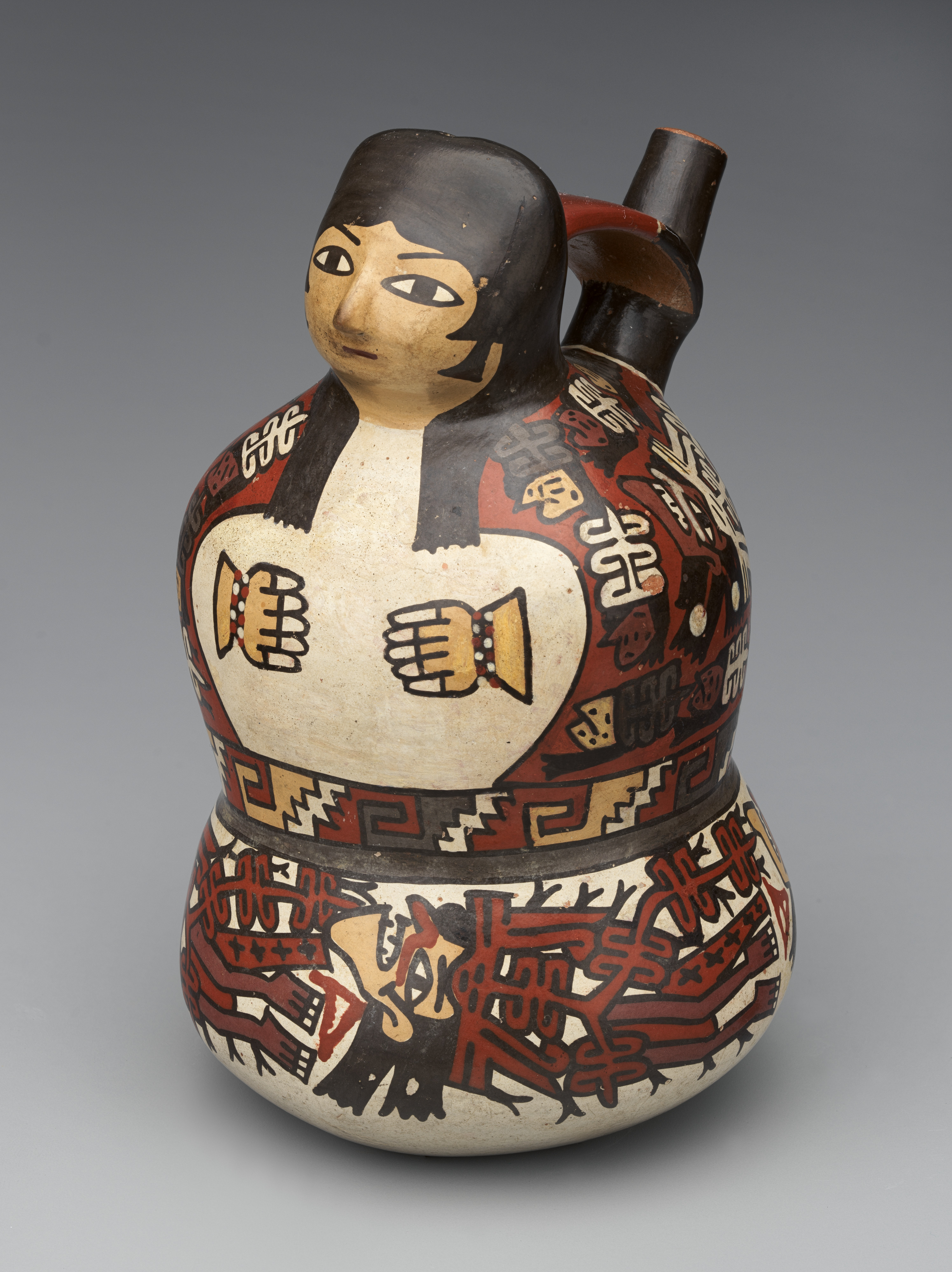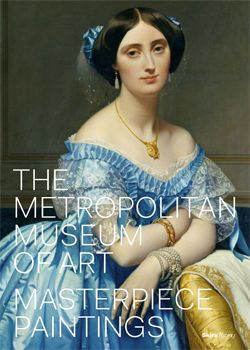Bottle with female figure
Nasca ceramicists of Peru’s South Coast produced refined polychrome vessels in the early and middle centuries of the first millennium of the Common Era. Nasca artists depicted animals, plants, people, and supernatural beings in great detail, including distinctive hairstyles, nose ornaments, and elaborate clothing. These fine polychrome ceramics were used in ceremonies attended by hundreds of people, who transported these vessels back home as prestige items and as carriers of religious knowledge.
Women were depicted frequently in Nasca ceramics. Sometimes they appear unclothed, with abstract motifs on their bodies. Here, a woman with loose hair wears a richly decorated garment. Her tunic features a riot of body parts. Disembodied heads float in the upper section, and heads with transparent, flying bodies lie in the lower band; the red strokes on the noses and under the jaws may represent blood. The tunic is fastened with a band decorated with a step-and-volute motif, very common in coastal societies during this era (see, for example, a stylized version in MMA 1992.60.6, .7).
In many ways, the Nasca style is a continuation of the earlier Paracas style (see, for example, MMA 1974.123.1), but Nasca artists distinguished their work through the use of colorful slips applied before firing, thereby permanently fixing the color to the ceramic surface. Nasca ceramicists combined a watery clay solution with ground mineral pigments. Kaolin was used for white; reds and yellows were obtained with iron oxides; and black areas were probably made with manganese minerals. Slips were applied to the surface of vessels before the firing process, when the clay was still moist. Whereas solid areas of colored slip may have been applied with a smooth cotton fiber, the intricate designs and delicate outlines were made with fine brushes. The lustrous surface was achieved by burnishing, the process in which the painted surface is rubbed with a flat stone or other smooth object while the clay is “leather hard,” i. e. moist enough to be joined to another piece, but dry enough to be difficult to bend. This process aligns the clay particles so that light is reflected in a more monochromatic manner thereby intensifying the colors.
References and Further Reading
Ikehara-Tsukayama Hugo C., Dawn Kriss, and Joanne Pillsbury. “Containing the Divine: Ancient Peruvian Pots.” The Metropolitan Museum of Art Bulletin Vol. 80, Number 4 (Spring 2023). “Containing the Divine: Ancient Peruvian Pots.” Metropolitan Museum of Art Bulletin vol. 80, no 4 (Spring 2023).
Lapiner, Alan C. Pre-Columbian Art of South America. New York: H. N. Abrams, 1976.
Lasaponara, Rosa, Nicola Masini, and Giuseppe Orefici, eds. The Ancient Nasca World: New Insights from Science and Archaeology. New York: Springer, 2016.
Pardo, Cecilia, and Peter Fux. Nasca. Lima: Museo de Arte Lima, 2017. Proulx, Donald A. “Ritual Uses of Trophy Heads in Ancient Nasca Society” in Ritual Sacrifice in Ancient Peru, edited by Elizabeth Benson and Anita Cook, 119-136. Austin: University of Texas Press, 2001.
Proulx, Donald A. A Sourcebook of Nasca Ceramic Iconography: Reading a Culture Through its Art. Iowa City: University of Iowa Press, 2006.
Proulx, Donald A. “Paracas and Nasca: Regional Cultures on the South Coast of Peru” in Handbook of South American Archaeology, edited by Helaine Silverman and William Isbell, 563-584. Springer Press, 2008.
Sawyer, Alan Reed. Ancient Peruvian Ceramics: The Nathan Cummings Collection. New York: The Metropolitan Museum of Art, 1966.
Vaughn, Kevin J. "Craft and the Materialization of Chiefly Power in Nasca," in Foundations of Power in the Prehispanic Andes, edited by Kevin J. Vaughn, Dennis Ogburn, and Christina A. Conlee. Archaeological Papers of the American Anthropological Association, No. 14, pp. 113-30. American Anthropological Association, 2005.
This image cannot be enlarged, viewed at full screen, or downloaded.
This artwork is meant to be viewed from right to left. Scroll left to view more.




